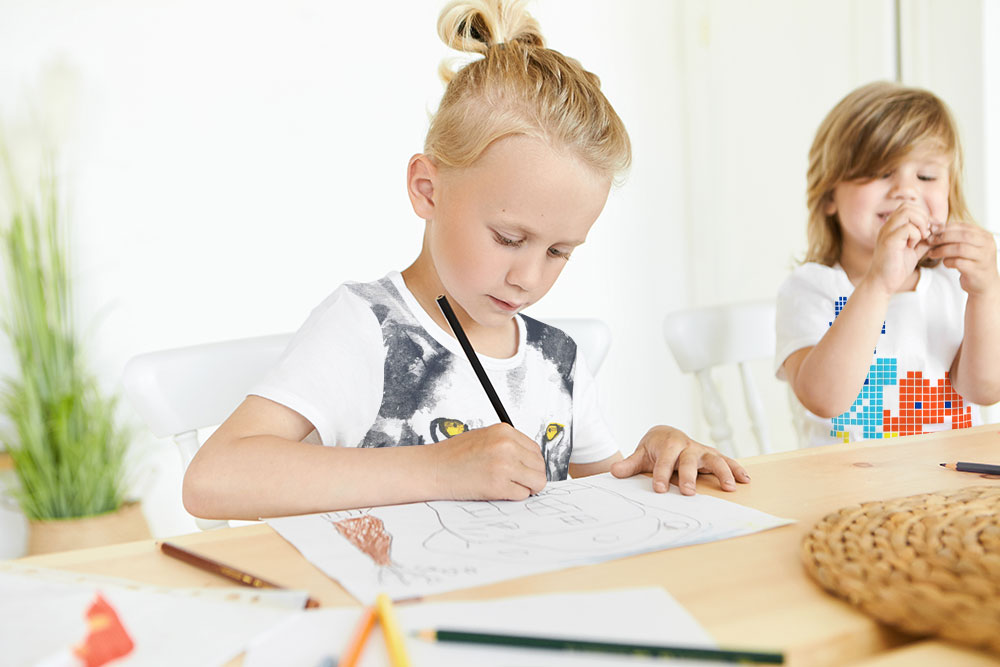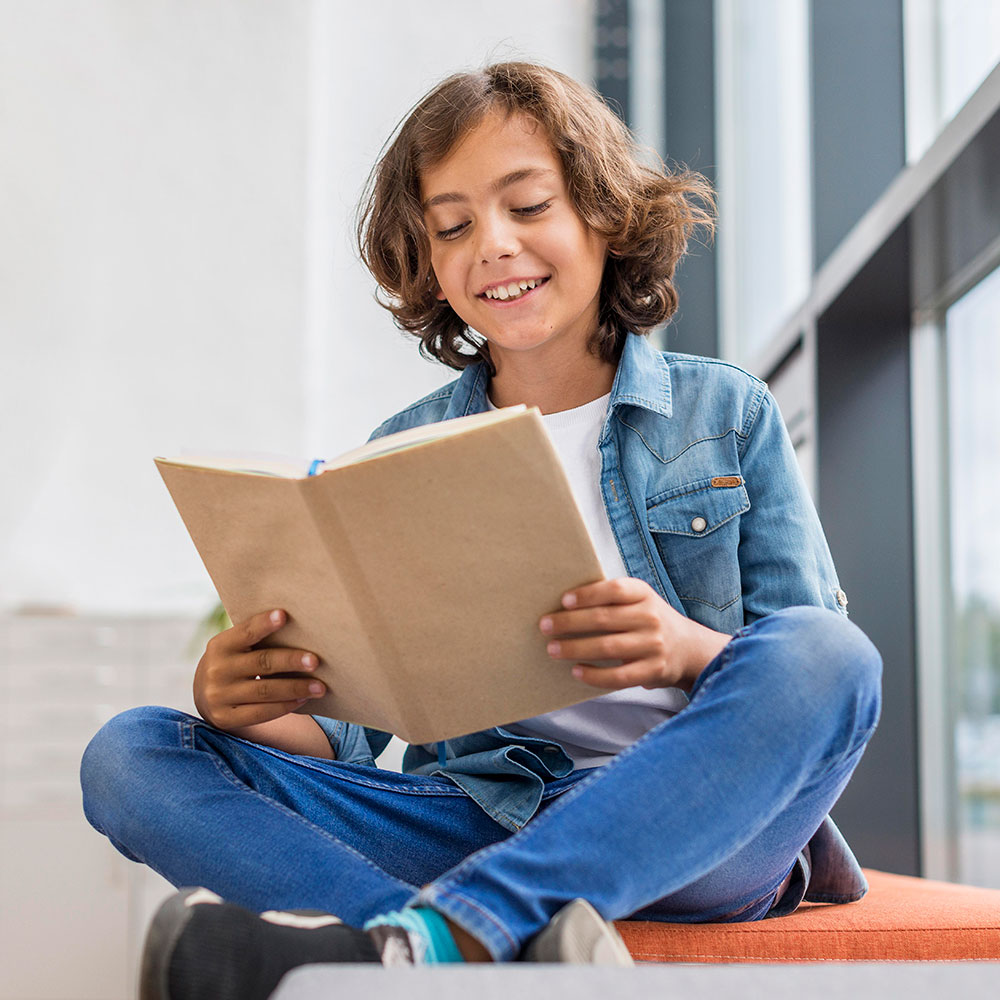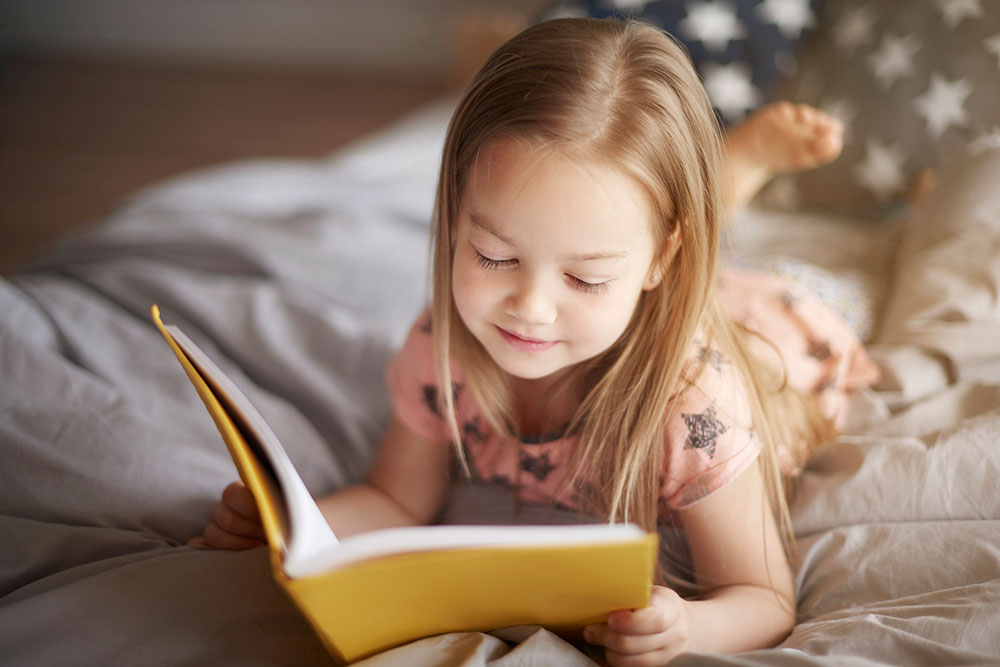
Preschoolers and first-grade students often face the challenge of memorizing a poem or song. This is a precursor to learning more difficult topics in the future. While a song can quickly become memorable thanks to its melody, a poem can pose a challenge. How can you help your toddler memorize information? How to memorize a poem for your child – We've got some tips!

Why memorization is important
The ability to memorize is incredibly important. From a practical perspective, a child must learn a vast amount of information to meet the many demands of school . Starting in preschool, memorization is practiced by reciting poems and rhymes or singing songs.
How to quickly memorize a poem ? Memory exercises also develop the brain by creating new connections between neurons. This process is important not only for children but also for adults, especially the elderly. Memory exercises exercise our brains like a muscle in the gym, allowing us to maintain good mental health for longer .

Learning content with understanding
Learning with understanding is one of the most important memory techniques. If we don't understand a problem, all knowledge, even if memorized for an exam, will soon evaporate. This technique is also important for memorizing poems and rhymes. Encourage your child to retell the material in their own words before beginning to memorize it . This is especially important for poems with stylistic devices that may not yet be understandable to young children. Discuss any doubts and start learning!

Repeating text
Repetition is another proven learning method. Each repetition strengthens the connections between neurons and allows for longer-term retention. How to memorize a poem for a child ? This is a rather individual matter and will also depend on how challenging the initial material is for the child.
We repeat, of course, until we memorize the content, and several times the next day, and for checkups after, say, a week. Consistency is key, and we shouldn't cram until the last minute. We should repeat intentionally each time, ensuring we understand the content or visualizing it. Concentration is key. However, for toddlers, this is a skill they may not yet be able to master. That's why so much of what they learn, for example, in English, is taught to children through songs and rhymes, which are much easier for them to absorb.
How can you use this when learning a rhyme ? You can set a popular melody to the rhyme and help your child learn it through singing. You can also emphasize certain words in a special way, give the rhyme a strong rhythm, or imitate voices and sounds, for example, in poems about animals and nature.

Engaging all the senses
Everyone is a little different; some are visual learners, others auditory, and others kinesthetic. Therefore, it's important to match the learning method to your child's strengths. A kinesthetic learner will find it easier to learn a song that uses gestures and movement, an auditory learner will gain more from a discussion, and a visual learner will learn more from drawing the content on paper.
Don't limit yourself to just one method, though . Engage all your senses. If your child encounters a block when repeating a verse aloud, have them write it down several times. Another difficult verse might require exaggerated gestures. New associations will help you memorize the content. Also, learn some poems about teddy bears to help you practice memorization!

Remembering by association
An interesting technique is memorization by association. It's useful for remembering things in order, for example, or for memorizing information without context. This technique involves associating the content we're learning with another word (the stranger the better) and creating a story from the new words.
Example 1
The child keeps confusing the abbreviations for the element silver Ag and gold Au. The parent told the child a short story unrelated to chemistry, which assigns the correct abbreviation to the element: "A pirate raided a treasure. First, he saw the silver and rushed at it, shouting, "Agggrrr!!!" Then he saw even better gold and ran to it. However, a guard was waiting near the gold and hit the pirate in the head with a baton. Then the pirate shouted, "Ouch!!!" Of course, we tell the story appropriately, using gestures and intonation to help the child remember it.
Example 2
The child has trouble remembering the case order of nouns. The parent invents a story to organize the order. Michał aims well , picks up the tools , and stirs the water .
Of course, the story doesn't have to make sense; the weirder it is, the more memorable it is.

Does cramming on a sheet of paper make sense?
"Craming" is learning by repeating the same material over and over again, without necessarily understanding its content. It has its advantages and disadvantages. The disadvantage is, of course, superficial learning, without understanding the essence of the problem, which means that despite considerable effort, the memorized content will soon fade away.
But should we completely give up on "meticulous learning"? No! Nevertheless, this type of memorization is especially effective with material that may be more abstract to a child, such as mathematical formulas or the names of elements. Of course, you can be a good math student by memorizing all the formulas and rules, but not fully understand their implications.
Cramming is also effective for memorizing words in a foreign language. Initial learning may require this type of memorization because we lack sufficient knowledge of the language. Subsequent stages of learning will allow us to learn new words from context or through associations with words we already know.
When learning a poem, this method can also work if the child has problems with a particular line or stanza, although a better technique would be repetition with understanding.

What techniques to use to learn a poem by heart
The best techniques for teaching poems and rhymes to young children are:
- Learning through play - make faces and gestures related to the poem, you can fool around or sing if it helps your little one remember the text
- Repetition (for children who cannot read, we can record a poem to be played over and over again, the child will repeat the poem along with the recording)
- Visualizing the story - your child can tell the story in their own words or draw it
- Accentuating words and adding interesting sounds
- Learning from books with illustrations - the pictures will help you remember the content of the poem
- Learning to give a poem a strong rhythm or melody
- Reading or reciting a poem aloud
- Breaks during studying, a short walk or dividing the study into e.g. two days
- Access to fresh air while learning a poem by heart, airing the room during breaks in study


Podziel się:
The best ideas for St. Andrew's Day games for children
The best ideas for St. Andrew's Day games for children